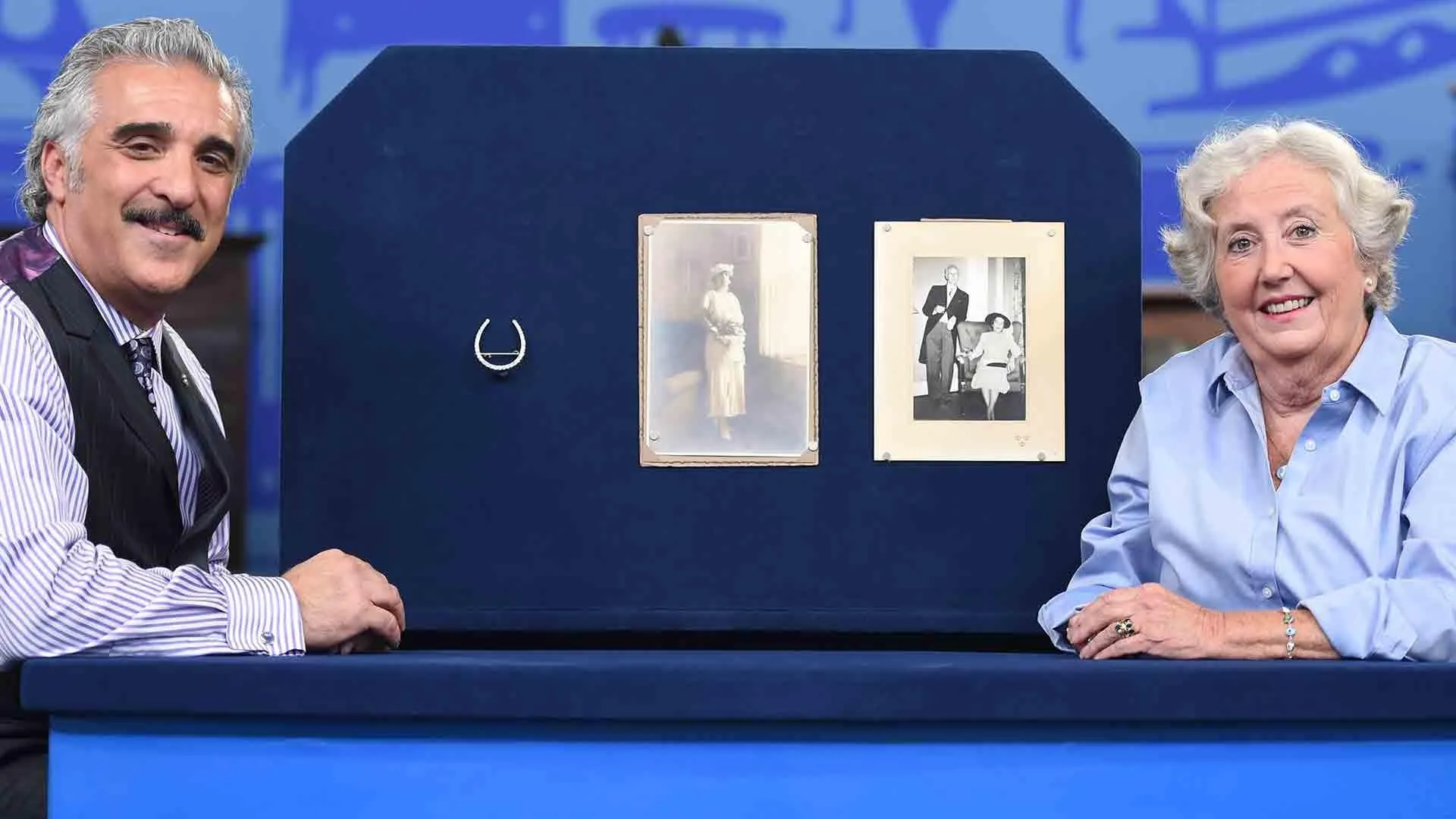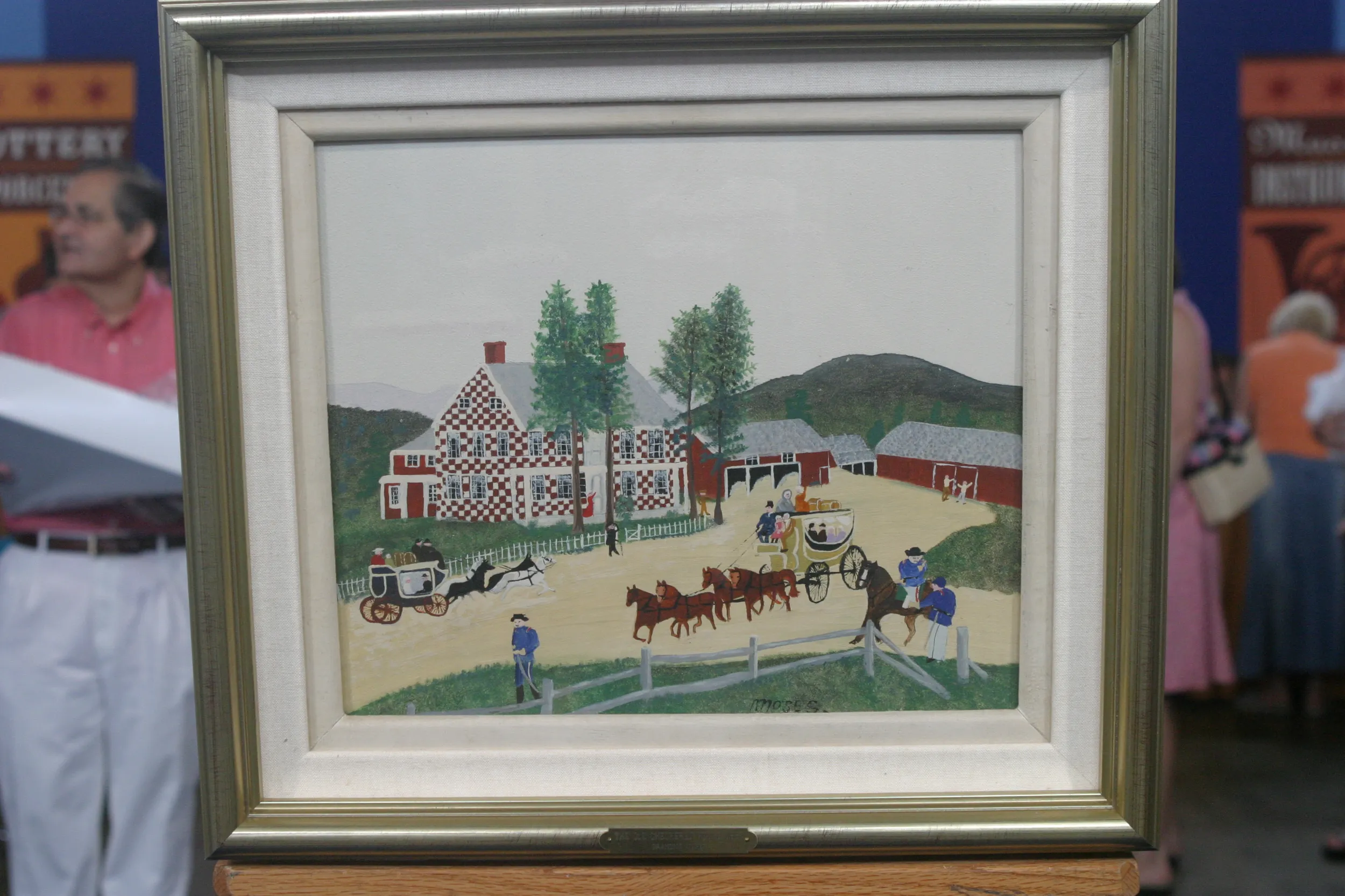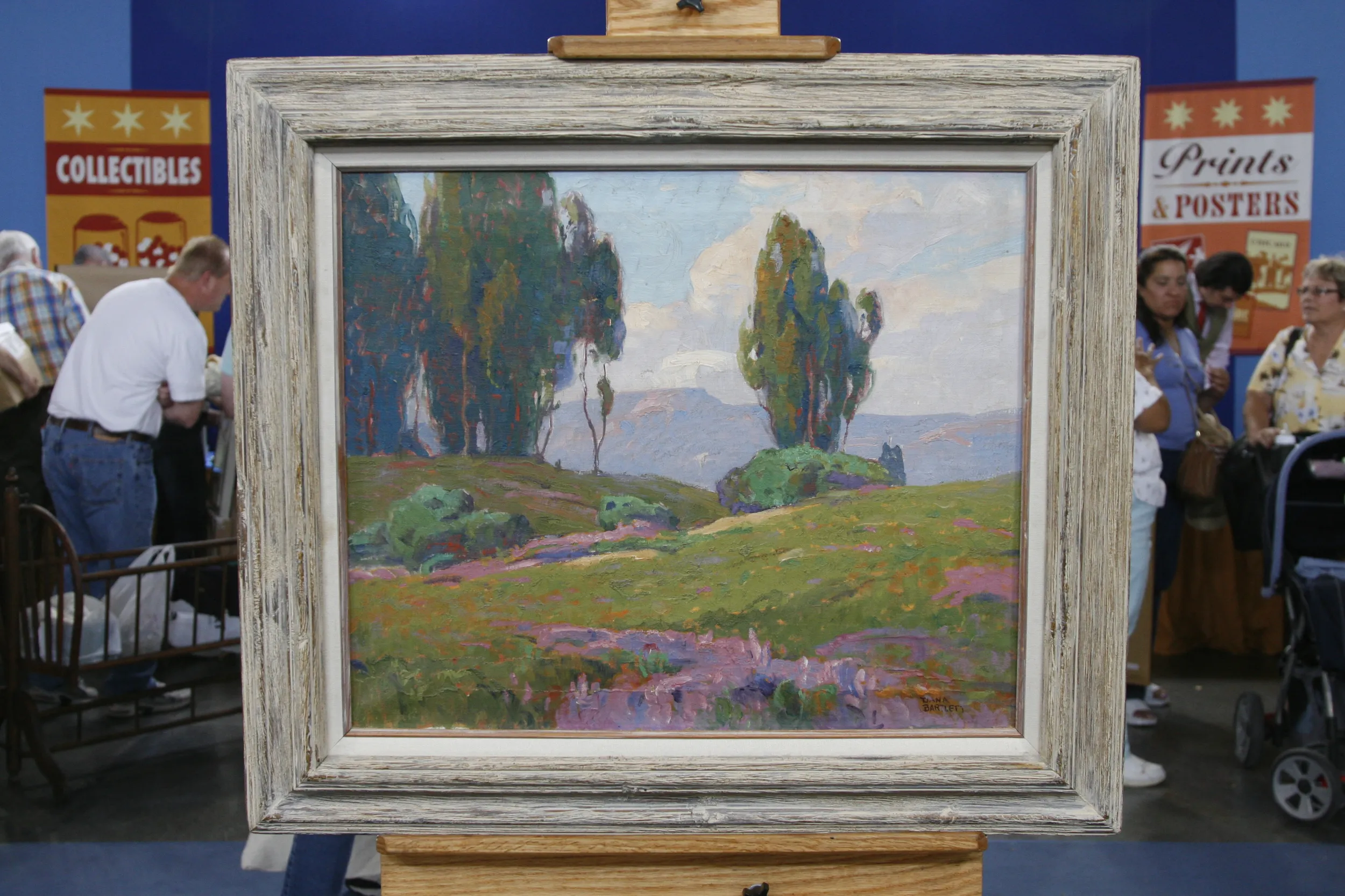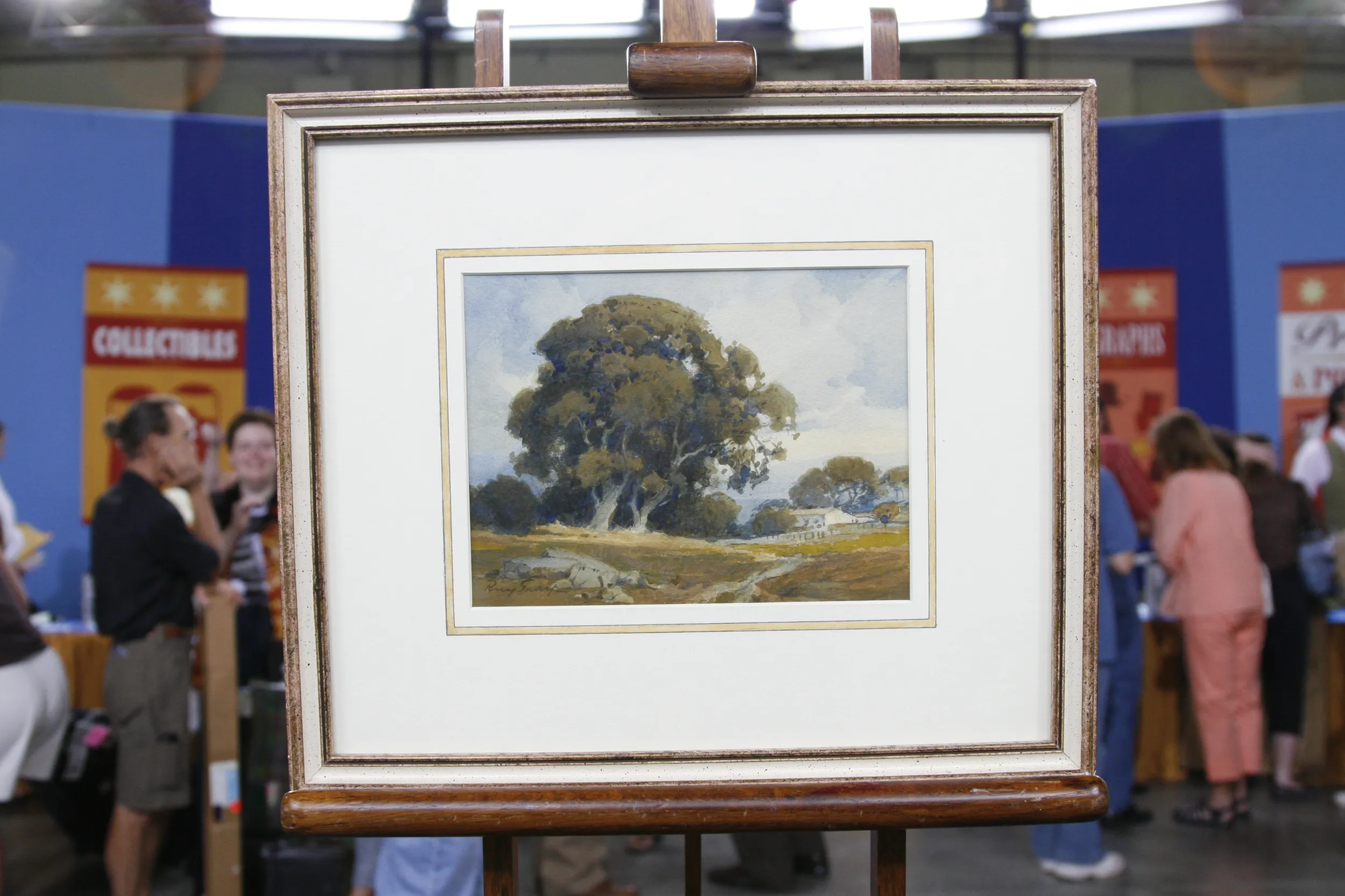GUEST: This is a painting of the Greenbrier River that was done in 1875.
APPRAISER: How long have you had it?
GUEST: My mother got this as a wedding present from her mother in 1947. It's been in my family ever since, been hanging in our living room until my parents passed away in 2007, 2008, and then I got ahold of this. We don't have somewhere in the house to put it right now, so we've had it stored in the climate-controlled room there in the house.
APPRAISER: It's a great-looking landscape. When we look up this artist, "Young," it's a bit of a conundrum. The more I look into this artist, he was quite the mystery man. One database, which we all look at as appraisers, I see that he died in 1870. Well, that's quite puzzling, given that your painting was done in 1875.
GUEST: Yes, it is.
APPRAISER: He is an artist who we don't know a lot about, in short, but it's a fantastic painting. We know that he primarily called Cincinnati, Ohio, his home, but we also know that he painted areas in West Virginia.
GUEST: Okay.
APPRAISER: He's got works depicting the river in Kanawha. He's also got some paintings depicting the Cheat River, also in West Virginia. It is really rare to get great early landscapes, 19th century landscapes, of particular areas in America. We think about the Hudson River School in New York, and we think about artists of that period trying to show the world, "We're every bit as good as Europe. "Look at the beauty of our landscape, the topography, how rugged." This is really a time capsule of what West Virginia looked like in 1875. You've got the beautiful mountains in here. I love the rugged tree in the foreground. And I particularly love the encampment, and we've got the figures here, we've got the fire going, and what look like a few fires in the background.
GUEST: Right.
APPRAISER: So we've got an artist who some people say he worked around the 1850s, '60s, some people say the 1860s, 1870s. Let's call him an Ohio-based artist, but he sure liked painting in this area.
GUEST: Right.
APPRAISER: The painting is also signed, and it's located on the back. Also nice to see. I don't know if you noticed on the back of the painting, there's a stretcher label from a retailer from Chestnut Street in Philadelphia.
GUEST: I did not know that.
APPRAISER: Which is also interesting because according to one source I read, at least one year of his life, this mysterious artist, he's listed as a Philadelphian. It's an original oil on canvas. It's in fine condition, except for one little thing. You told me something that happened on the way here.
GUEST: Yesterday.
APPRAISER: I won't make you feel badly.
GUEST: Oh, that's okay.
APPRAISER: But you said you had a little bit of a tear that occurred.
GUEST: Yes.
APPRAISER: And we can see that right here.
GUEST: Yes.
APPRAISER: The good news is that tear can be repaired.
GUEST: Wonderful.
APPRAISER: It is a period frame. In today's auction market, with the interest in local scenes, we think this painting would bring $15,000 to $20,000.
GUEST: Wonderful.
APPRAISER: It's a terrific painting.
GUEST: I had no idea. We've been trying to get to the ROADSHOW for four years. Ironic that we could come to this one.











